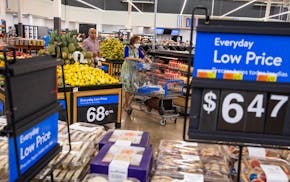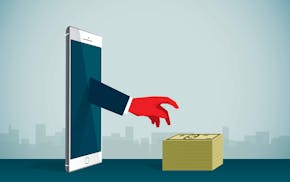Neel Kashkari, like other central bankers and economists, thought the sharp rise in inflation that began last spring wouldn't last long.
Now that it has, the president of the Federal Reserve Bank of Minneapolis agrees that the nation's central bank must raise interest rates at least a couple of times in 2022 to cool it down.
That's a big change for Kashkari, who since joining the Fed in 2016 has advocated for low rates to boost employment.
In an interview, he discussed why employment remains a priority for him and when he thinks inflation, which was 7% in December, may reach the 2% level that Fed uses as a benchmark. Some excerpts:
Q: How worried are you about inflation?
A: I'm focused on inflation but not worried about inflation. And I'm not worried about it for a few reasons. One is there are a bunch of structural things that should bring inflation down without the Federal Reserve doing anything. For example, we know the fiscal stimulus from the government is waning. That's going to put less pressure on prices automatically.
Number two, I've talked to a lot of global businesses headquartered in Minnesota; they're all working really hard on their supply chains. I'm cautiously optimistic that should start to get better over the course of this year. Third, we still have about 3 million to 4 million Americans who are out of the workforce, and I expect some of them, maybe many of them, will end up coming back into the workforce. That will help on the supply side.
And then the Federal Reserve is absolutely committed to making sure we get inflation in check and achieve price stability.
The question is: How much are we going to have to do while these other factors hopefully help bring inflation down? It's going to take some time before we know the answer to that.
Q: How long might it be before inflation is back at the Fed's 2% target?
A: If you look at the range of public forecasters, many of them are in the 2.5% to 3% kind of range for this year, which is a big improvement over 2021 but still too high. I think if we really are at the 2.5% to 3% range this year, it would give me a lot of confidence that inflation is heading back down to our 2% target.
You know, for 20 years before the pandemic hit, the bigger struggle for advanced economies' central banks was low inflation. We couldn't get it to our 2% target. That, we believe, is being driven by broad structural factors like the aging of society. Demographics drives a lot of things like this. Those factors are still there. If anything, they've gotten worse because immigration has slowed so dramatically in America. So we also have to pay attention to the fact that these big structural factors likely will be the ones that drag inflation low again in the future.
Q: Do you think that in retrospect the U.S. government sent out too much aid and overheated the economy?
A: It was very unclear when the COVID shock happened how big the hole would be in terms of lost income. We saw a very high unemployment rate and didn't know how long that unemployment would stay high. So I actually applaud Congress for erring on the side of — better to do too much. If you compare it to the 2008 crisis, I think history has shown that policymakers did too little in response. And then we had a very slow recovery. It took 10 years to rebuild the labor market, which is far, far too long.
Q: One of the reasons in the past you've been resistant to raising rates was that you felt we weren't at maximum employment yet. Do you think we're there now?
A: Well, this is what's tricky. There's a concept of a short-run maximum employment and a long-run maximum employment. ... Right now, it seems pretty clear that the demand for workers is exceeding the supply of workers. So in that context it would seem like, yes, we're probably at maximum employment. But does this mean over the next few years the labor market cannot get better and we cannot bring more people in? No, it doesn't mean that.
Q: Are you concerned that as the Fed does increase rates that it could lead to an increase in unemployment?
A: It's something I'm going to pay very close attention to. We're providing a lot of monetary stimulus. And by stopping our asset purchases and eventually rolling those off and then gradually interest rates, we are going to be keeping our foot off of the accelerator. That doesn't mean we're going to be stepping on the brakes yet.
Q: Is that your biggest concern about raising interest rates?
A: It is. My big concern, and I know my colleagues share this, is making sure we can keep the labor market strong. We're finally seeing the fastest wage growth for the lowest-income workers. These folks are long overdue for a raise. They're finally getting options and choices in where they work. In a sense, the pendulum is finally swinging back toward workers after a long, long time. We've got to keep that going. We don't want it to go too far where it leads to an inflationary spiral, but we're not going to let that happen.
Q: Lower-income people struggle the most from inflation. But it seems like raising rates will also make it harder for them to afford a home or a car. So how do you balance that out?
A: You're exactly right. On one hand, these are folks who spend most of their money on necessities, like housing or on food or clothing. ... But at the same time, if the central bank were to raise the rates aggressively to get inflation back in check, in the worst case scenario it leads to a recession. Those are the folks then who are most likely to lose their jobs. So this is a very delicate balancing act that we need to undertake to try to gradually cool things off a little bit but without slamming on the brakes.
Minnesota's med spa industry rises in popularity — and with little regulation

Ramstad: Readers say Walmart won't be paying the ultimate price of Trump's tariffs

How Minnesota businesses can spot and prevent invoice fraud
No place for cryptocurrency in retirement portfolios

